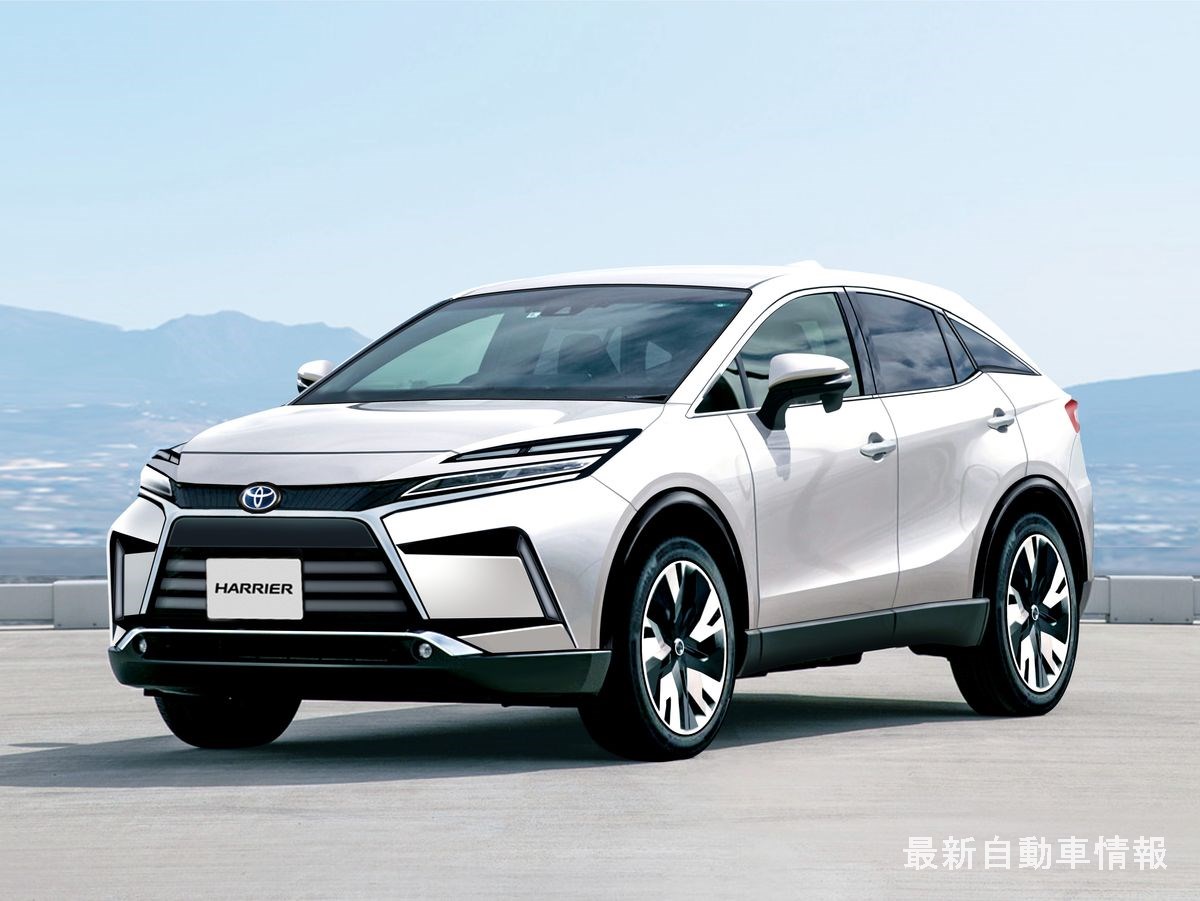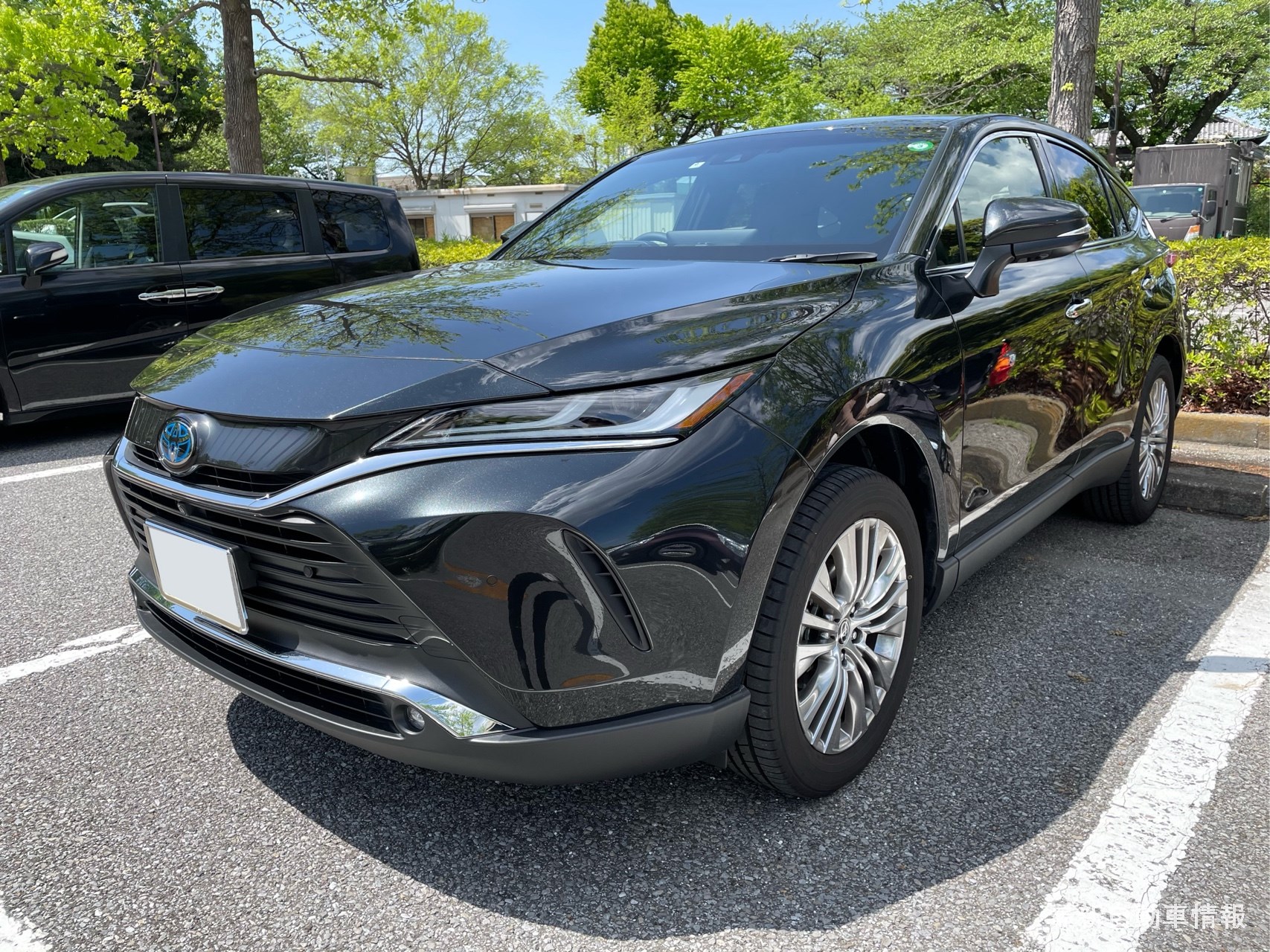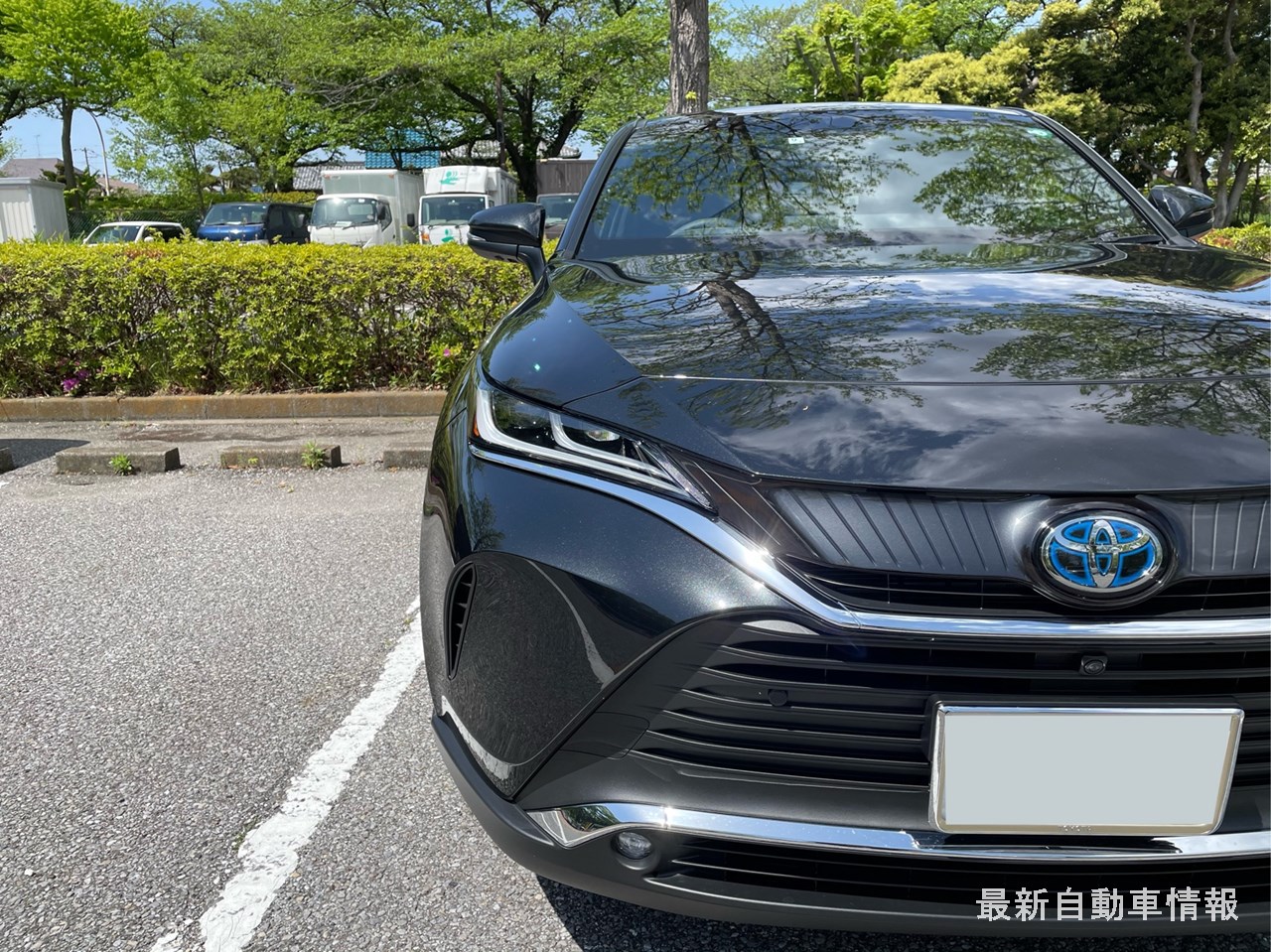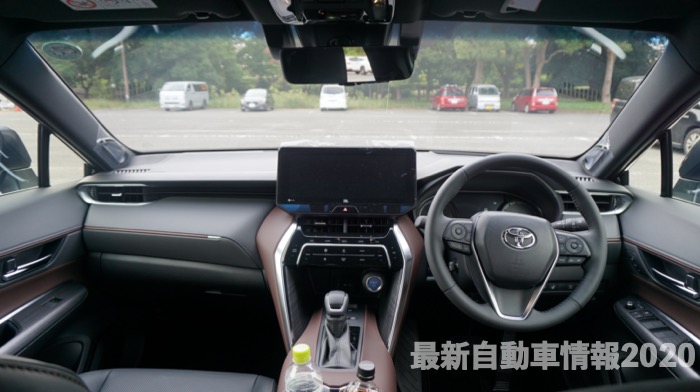
Toyota will make minor changes to the Harrier and release it around March 2025. The current model was released in June 2020, and the Harrier has now been in its fourth year.In the past, this would have been a time for a full model change, but this is the first time the Harrier has undergone a minor change. If you are considering purchasing a Harrier, please use this as a reference.
ADVERTISEMENT
ADVERTISEMENT
- About the new Harrier minor change
- About the new Harrier minor change exterior
- About the new Harrier minor change interior
- About the new Harrier minor change safety equipment
- About the new Harrier minor change expected specifications
- About Toyota new Harrier PHEV
- About the new Harrier minor change expected price
- When will the new Harrier undergo its first minor change?
- Should I wait for the new Harrier minor change?
- A final word from the editorial department
About the new Harrier minor change
The exterior design is expected to change, such as the shape of the front bumper and the position of the rear turn signals. We anticipate that the current basic design will continue to be adopted.
- The first minor change will be in 2025.
- Exterior changes
- Added new brown color to interior color
- 12.3-inch full LCD digital meter with map display function
- Adopts the latest safety system “Toyota Safety Sense”
ADVERTISEMENT
ADVERTISEMENT
About the new Harrier minor change exterior
We expect that the minor changes to the Harrier will include changes to the shape of the front bumper and the position of the rear blinkers. In fact, the current situation is that the “rear combination lamp” that lights up the rear taillight horizontally is located above, but the turn signal is placed below. Although the turn signals are installed in legally acceptable positions, there are concerns that the driver of the car behind them may miss them because they are located in a different position than the rear taillights. So from a user’s perspective, I think this should be changed with a minor change.


Toyota current Harrier rear
The new common design “Hammerhead” has been adopted in some media and expected CGs, but we do not expect it to be adopted in this minor change.

2025 Toyota Harrier expected CG
The “Hammerhead” design, which started with the new 5th generation “Prius” and “bZ4X”, was inspired by the hammerhead shark. This design has rapidly spread to new Toyota models, and has become Toyota’s iconic design. However, this time the Harrier has undergone a minor change, and it seems unlikely that the “keen look” will be significantly changed to the “hammerhead”. Therefore, we believe that the timing of the next full model change is the right time to adopt the “Hammerhead”.


Toyota current Harrier
ADVERTISEMENT
ADVERTISEMENT
About the new Harrier minor change interior

It is expected that there will be few changes to the interior design, but the most anticipated feature is the adoption of a new interior design. I myself was a user of the late-generation Harrier, and a new color, “Dark Saddle Turn,” was added in the latter half, and I fell in love with its appearance at first sight and purchased it.


Previous Harrier Interior Interior color: Dark Saddle Turn
In the current Harrier, all seat colors are black, but by adopting a brown color seat like the new color used in the Vellfire, Sunset Brown, a minor change has made it comparable to foreign cars. I think it will be reborn as a sophisticated interior.


Current Harrier interior color brown
Sunset Brown is popular for the new Vellfire. Toyota may add a brown interior color at the time of minor changes, and we think that possibility is high. It is also highly likely that the map display function in the 12.3-inch full-LCD digital meter, which is used in the current Crown Series, will be newly adopted.
ADVERTISEMENT
ADVERTISEMENT
About the new Harrier minor change safety equipment
The new Harrier is expected to adopt the latest safety system “Toyota Safety Sense” and will be equipped with new functions such as “Proactive Driving Assist,” “Advanced Park,” and “Advanced Drive (Congestion Assistance).”
The next generation Toyota Safety Sense will be standard on all models. The latest “Collision Avoidance Support Type Pre-Crash Safety” has achieved further functional enhancements. This includes detection at intersections, acceleration suppression functions at low speeds, and steering avoidance support functions in emergencies. Equipped with pedestrian detection function, this system uses millimeter-wave radar and cameras to detect vehicles and pedestrians in front of the vehicle, and uses warnings, brake assist, and automatic braking to assist in collision avoidance and reduce damage. Automatic braking operates in the speed range of 10 to 80 km/h for pedestrians, and provides appropriate deceleration depending on the speed difference. It also operates in a wide range of speeds, from 10 km/h to the maximum speed, and can decelerate stopped vehicles at high speeds. Furthermore, functions such as “low-speed acceleration suppression function,” “detection of oncoming vehicles and pedestrians when turning right at an intersection,” and “emergency steering avoidance support function” have been added.
- At low speeds, the low speed acceleration suppression function detects pedestrians, cyclists, and vehicles directly in front of the vehicle and suppresses acceleration.
- It can also detect oncoming vehicles when turning right at an intersection, as well as pedestrians crossing from the opposite direction when turning left or right.
- An emergency steering avoidance support function that assists steering in response to the driver’s avoidance steering during an emergency.
Road Sign Assist (RSA) has expanded the range of detection targets, and also reads major traffic signs on the side of the road, such as “Speed Limit,” “Stop,” “No Entry,” and “No Extending,” and displays them on the instrument panel.
A Lane Departure Alert (LDA) camera recognizes white and yellow lines in the driving lane, and if a possibility of lane departure is detected, a buzzer and display alert the driver to avoid collisions caused by lane departure. support.
Leading vehicle departure notification function If you stop following a vehicle in front while waiting at a traffic light or in traffic jams, and remain there without noticing that the vehicle in front has started, you will be notified with a buzzer and a display.
An automatic high beam (AHB) camera detects the headlights of an oncoming vehicle or the taillights of a vehicle in front, and automatically switches between high and low beams to reduce dazzling to drivers of other vehicles and ensure forward visibility at night. support.
Radar cruise control Radar cruise control uses millimeter-wave radar to detect the distance between the vehicle in front and the vehicle in front, and adjusts the speed to match the speed of the vehicle in front within a set vehicle speed, allowing the vehicle to follow the vehicle while maintaining a constant distance. Adopted. Lane changes by the vehicle in front are detected using millimeter wave radar and cameras, achieving smoother acceleration and deceleration control. Aiming for “zero traffic fatalities and injuries,” which is the ultimate wish of a mobility society, Toyota researches and develops various safety equipment and systems based on the “Integrated Safety Concept” and is committed to “developing safer vehicles and technologies.” At the same time, we are strengthening a wide range of initiatives for traffic safety through “participation in improving the traffic environment” and “traffic safety awareness activities for people.”
Lane Tracing Assist (LTA) Lexus Lane Tracing Assist [LTA] installed in the new LS series is adopted for the first time in the next generation Toyota Safety Sense P. When driving on a highway or expressway, turning on the Lane Tracing Assist (LTA) switch when the radar cruise control is activated will provide steering support necessary to maintain lane.
ADVERTISEMENT
ADVERTISEMENT
advanced safety
Intelligent Clearance Sonar (Parking Support Brake Stationary) A system that helps reduce damage by mitigating collisions caused by pressing the accelerator incorrectly or pressing too hard. A function has been added to the Clearance Sonar, which uses a display and a buzzer to alert you when you are approaching a stationary object when driving in a garage, etc., to reduce the risk of contact with a stationary object. Sonar also detects windows such as convenience stores. When driving at low speeds (15 km/h or less), if a stationary object is detected in the direction of travel, the hybrid system output is suppressed and the brakes are automatically applied when the distance further decreases.
Emergency brake signal (hazard lamp flashing type) When you apply sudden brakes, the hazard lamp flashes automatically.
Lane Tracing Assist [LTA] system for responding to driver abnormalities. If the driver remains inactive during control, a sound, display, and slow deceleration warning will prompt the driver to take action, and a hazard and horn will alert the driver to abnormalities outside the vehicle. The vehicle decelerates and stops within the vehicle’s own lane while alerting the driver, helping to avoid accidents that cause injury or damage to the vehicle, and reduce accident damage.
Digital interior mirror Images from a camera attached to the rear of the vehicle are displayed on the rearview mirror.
Advanced Park Remote function allows you to back up to the target parking position confirmed on the screen or exit from parallel parking by using the screen display, voice and buzzer to guide you, and by controlling the steering wheel, shift position, accelerator and brakes. assist. Additionally, a dedicated smartphone app is available, allowing you to park remotely from outside the vehicle.
Panoramic View Monitor (360° Monitor) This allows you to see areas that are hard to reach, such as diagonally behind or directly to the side of the car, allowing you to quickly spot obstacles.
Blind Spot Monitor (BSM) Radar detects vehicles running in adjacent lanes. When the vehicle enters the blind spot area, an LED indicator mounted on the door mirror lights up.
Safe Exit Assist (SEA) When exiting the vehicle, the Blind Spot Monitor [BSM] sensor is used to detect approaching vehicles, including bicycles, from behind. If the system determines that there is a possibility of collision with the opened door or a passenger who has exited the vehicle, an indicator in the door mirror lights up to alert the driver.
Rear Cross Traffic Auto Brake Detects blind spots when reversing and alerts you. If there is a risk of collision, the system automatically applies brake control to help reduce damage from collisions with approaching vehicles.
Remote Start (App) A new optional service that allows you to start the engine and start the air conditioner from the MyTOYOTA app.
| System equipment | 4th current Harrier |
4th Harrier minor change |
|
|---|---|---|---|
| Toyota Safety Sense |
Collision avoidance support type pre-crash safety |
◯ Day and night pedestrian bicycles |
◯ Day and night pedestrian bicycles |
| Lane departure alert ( with steering control function) |
◯ Steering control white line/yellow line detection road edge detection sway alarm |
◯ Steering control white line/yellow line detection road edge detection sway alarm |
|
| adaptive high beam system |
◯ | ◯ | |
| Radar cruise control (with all vehicle speed tracking function) |
◯ | ◯ | |
| lane tracing assist |
◯ | ◯ | |
| road sign assist | ◯ | ◯ | |
| Leading vehicle departure announcement | ◯ | ◯ | |
| preventive safety equipment |
blind spot monitor |
◯ | ◯ |
| intelligent clearance sonar |
◯ | ◯ | |
| Rear cross traffic auto brake |
◯ | ◯ | |
| drive start control |
◯ | ◯ | |
| Hill Start Assist Control |
◯ | ◯ | |
| panoramic view monitor |
◯ | ◯ | |
| proactive driving assist |
– | ◯ | |
| advanced park | – | ◯ | |
| Advanced Drive (support during traffic jams) |
– | ◯ | |
| Comfortable equipment |
Comfortable heated seat + seat ventilation |
◯ | ◯ |
| Digital inner mirror (with front and rear recording function) |
◯ | ◯ | |
| ITS Connect | ◯ | ◯ | |
| help net | ◯ | ◯ | |
| Electric parking brake & hold |
◯ | ◯ | |
| power seat | ◯ | ◯ | |
| Microcomputer preset driving position system |
◯ | ◯ | |
| hands free power back door |
◯ | ◯ | |
| heads up display |
◯ | ◯ | |
| Driver seat auto slide away |
◯ | ◯ | |
| Electric tilt & telescopic steering |
◯ | ◯ | |
| Naviless | – | – | |
| toyota display audio |
◯ | ◯ | |
| In-vehicle communication device (DCM) | ◯ | ◯ | |
ADVERTISEMENT
ADVERTISEMENT
About the new Harrier minor change expected specifications

There are no changes to the basic specifications due to minor changes. Both engines are still new and are excellent engines that are widely used in the current Alphard, Vellfire, and Crown series. Body size also remains the same. However, the biggest concern is pricing due to the impact of soaring prices.
| spec | harrier | |||
|---|---|---|---|---|
| full length | 4,740mm | |||
| full width | 1,855mm | |||
| Overall height | 1,660mm | |||
| Wheelbase |
2,690mm | |||
| engine | 2.5L in-line 4-cylinder direct injection engine “Dynamic Force Engine” + motor |
2.0L in-line 4-cylinder direct injection engine “Dynamic Force Engine” |
||
| Maximum output | 131kW (178ps) / 5,700rpm |
126kW (171ps) / 6,600rpm |
||
| Maximum torque | 221Nm (22.5kgm) / 3,600-5,200rpm |
207Nm (21.1kgf・m) / 4,800rpm |
||
| Front motor maximum output |
88kw (120ps) | – | ||
| Front motor maximum torque |
202Nm (20.6kgm) | – | ||
| Rear motor maximum output |
– | 40kW (54ps) | – | |
| Rear motor maximum torque |
– | 121Nm (12.3kgfm) | – | |
| System maximum output |
160kW (218ps) |
163kW (222ps) |
– | |
transmission |
Electric variable speed transmission |
Direct Shift- CVT |
||
| Drive system | 2WD | E-Four (4WD) |
2WD | 4WD |
| vehicle weight | 1,710kg | 1,770kg | 1,620kg | 1,680kg |
| Minimum turning radius |
5.5m~5.7m | |||
| WLCT mode fuel consumption |
22.3km/L | 21.6km/L | 15.4km/L | 14.7km/L |
| tire size | 225/55R19 235/55R18 225/65R17 |
|||
| Riding capacity | Five people | |||
ADVERTISEMENT
ADVERTISEMENT
About Toyota new Harrier PHEV
There are no changes to the plug-in hybrid model either.
The exterior features a special front grill. Exclusive exterior color gray metallic <1G3> setting. In addition to black paint applied throughout, the interior features dark red piping ornaments with a metal mesh texture from the instrument panel to the door trims.
| spec | Harrier PHEV |
|---|---|
| full length | 4,740mm |
| full width | 1,855mm |
| Overall height | 1,660mm |
| Wheelbase | 2,690mm |
| engine | In-line 4-cylinder 2.5L direct injection engine D-4S + motor (THSⅡ) |
| Maximum output | 130kW (177ps) / 6,000rpm |
| Maximum torque | 219Nm (22.3kgfm) / 3,600rpm |
| Front motor maximum output |
134kW (182ps) |
| Front motor maximum torque |
270Nm (27.5kgfm) |
| Rear motor maximum output |
40kW (54ps) |
| Rear motor maximum torque |
121Nm (12.3kgfm) |
| system output | E-Four: 225kW (306ps) |
| transmission | Electric continuously variable transmission |
| battery | Lithium-ion battery 18.1kWh |
| Drive system | 4WD (E-Four) |
| Riding capacity | Five people |
| Minimum turning radius | 5.7m |
| vehicle weight | 1,950Kg |
| JC08 mode fuel efficiency | – |
| WLTC mode fuel consumption | 20.5km/L |
| EV range | 93km/L |
ADVERTISEMENT
ADVERTISEMENT
About the new Harrier minor change expected price
The current 2024 model “Harrier” is priced from 3,128,000 yen to 6,200,000 yen, but there is no doubt that the price will be revised at the timing of minor changes.
| model | engine | transmission |
Drive system |
Price (10%) |
|---|---|---|---|---|
| Z “Leather Package” |
In-line 4-cylinder 2.0L direct injection engine “Dynamic Force Engine” |
Direct Shift-CVT |
2WD (FF) | 4,338,000 yen |
| 4WD | 4,538,000 yen | |||
| Z | 2WD (FF) | 4,038,000 yen | ||
| 4WD | 4,238,000 yen | |||
| G | 2WD (FF) | 3,529,000 yen | ||
| 4WD | 3,729,000 yen | |||
| S | 2WD (FF) | 3,128,000 yen | ||
| 4WD | 3,328,000 yen |
Hybrid model 2024 model price
| model | engine | transmission |
Drive system |
Price (10%) |
|---|---|---|---|---|
| Z “Leather Package” |
In-line 4-cylinder 2.5L direct injection engine “Dynamic Force Engine” + motor |
Electric continuously variable transmission |
2WD (FF) | 4,928,000 yen |
| 4WD (E-Four) | 5,148,000 yen | |||
| Z | 2WD (FF) | 4,628,000 yen | ||
| 4WD (E-Four) | 4,848,000 yen | |||
| G | 2WD (FF) | 4,119,000 yen | ||
| 4WD (E-Four) | 4,339,000 yen | |||
| S | 2WD (FF) | 3,718,000 yen | ||
| 4WD (E-Four) | 3,938,000 yen |
Plug-in hybrid 2024 model price
| model | engine | transmission |
Drive system |
Price (10%) |
|---|---|---|---|---|
| Z | Inline 4-cylinder 2.5L direct injection engine “Dynamic Force Engine” + motor (PHEV) |
Electric continuously variable transmission |
4WD (E-Four) | 6,200,000 yen |
When will the new Harrier undergo its first minor change?
The current Harrier has been on sale since June 17, 2020, and it was originally expected that it would be made in 2024, the fourth year, but the plan is to carry out minor changes around 2025 rather than within 2024. It has been.
Should I wait for the new Harrier minor change?
As for whether you should wait for a minor change to the Harrier, I think the conclusion is that you should wait. Prices are expected to rise, but at the same time, the latest equipment, interior, and exterior improvements will make many improvements over the current model, and the introduction of Toyota’s hybrid system will improve fuel efficiency, making it a great value. It is expected that this will become a more attractive model.
A final word from the editorial department
The fourth generation is currently on sale, and it went on sale on April 13, 2020. A PHEV model was added for the first time in the improvement on October 4, 2022. In 2023, 75,211 units were sold, and it remains Toyota’s most popular SUV in Japan. Therefore, this minor change is attracting attention. It is thought that the most desirable form is one that maintains the current design path while further improving it. As a user myself, I would like to wait to see what kind of changes will be made.
Articles that are often read together
» Harrier delivery date information New!
» Harrier discount information New!
